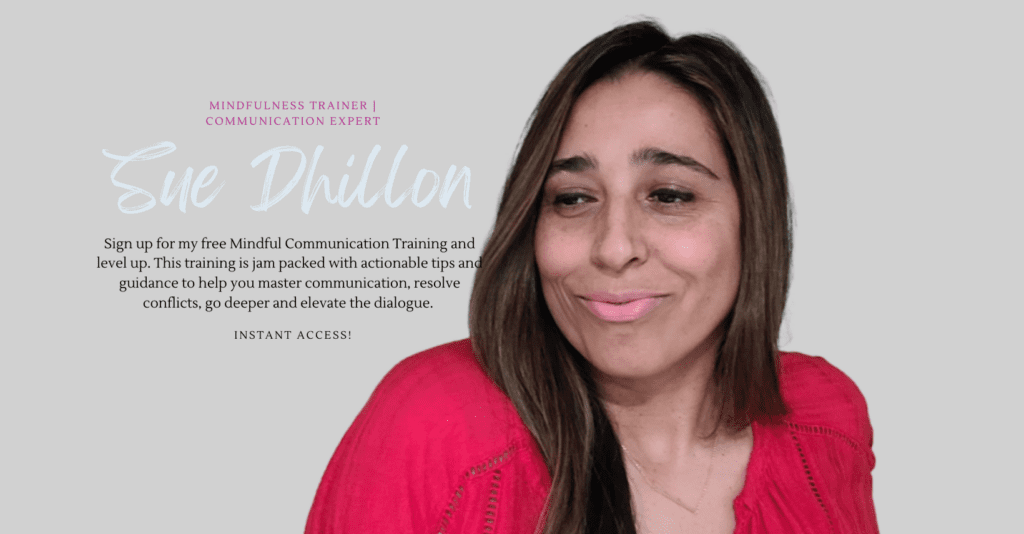In our worlds most everyone around us is doing most of the talking seldom pausing for deep listening. And for those who do slow down to listen are they truly listening? We scroll through conversations like social media, waiting for our turn to peak rather than genuinely absorbing what others share.

This crisis in communication lies at the heart of increasing disconnection—from our partners, family members, colleagues, and ultimately, ourselves. Yet the solution may be simpler than we imagine: learning to listen with our full presence. Mindful Communication can heal our relationships.
Table of Contents
The Listening Crisis in Modern Relationships
Research from the Harvard Business Review reveals that the average person listens at only about 25% efficiency. A study from Princeton University demonstrates that during typical conversations, our minds wander from the speaker’s words approximately 47% of the time. These statistics reflect a startling reality: even when physically present, we’re mentally absent during nearly half of our interactions with others.
The consequences extend far beyond missed information:
- Intimate relationships deteriorate when partners feel chronically unheard
- Workplace conflicts escalate when colleagues consistently misinterpret each other
- Parent-child relationships suffer when communication becomes one-directional
- Communities fragment when members feel their perspectives are dismissed
At its core, this crisis isn’t about hearing words—it’s about the fundamental human need to feel witnessed, valued, and understood.
The Neuroscience of Being Heard
Recent neuroscience research reveals why deep listening feels so essential to our well-being. When someone truly listens to us—maintaining eye contact, responding thoughtfully, and demonstrating genuine curiosity about our experience—our brains release oxytocin, the bonding hormone associated with trust and connection.
Simultaneously, activity in our amygdala—the brain’s fear center—decreases. This neurological shift creates a sense of safety that allows for authentic vulnerability and connection.
Conversely, when we sense someone isn’t truly listening (checking their phone, interrupting, or displaying closed body language), our brains register a social threat similar to physical danger. Cortisol levels rise, and our thinking narrows to self-protection rather than openness.
This research confirms what we intuitively know: being deeply heard is not a luxury but a neurobiological necessity for healthy relationships and personal well-being.
Beyond Technique: The Art of Mindful Presence
While communication strategies have value, truly transformative listening begins with a fundamental shift in presence rather than the acquisition of techniques. This presence-centered approach includes:
1. Whole-Body Listening
Traditional advice focuses on maintaining eye contact and nodding appropriately. While these physical cues matter, mindful listening extends to your entire being:
- Sensory awareness: Noticing the sensations in your own body as you listen
- Emotional attunement: Registering the emotional undercurrents beneath words
- Energetic presence: Bringing your full attention to the interaction without division
The practice involves continually returning your wandering attention to the present moment, much like returning to the breath in meditation.
2. Suspending the Inner Commentator
Our minds continuously generate commentary, judgments, and responses even while others speak. Mindful communication involves:
- Noticing when your mind begins formulating responses
- Gently setting aside rehearsed replies to return to genuine listening
- Creating space between the speaker’s words and your interpretation
This practice doesn’t mean eliminating all thought but developing awareness of your internal dialogue so it doesn’t hijack your attention.
3. Cultivating Genuine Curiosity
Perhaps the most powerful listening practice is approaching each conversation with authentic wonder about the speaker’s experience. This curiosity manifests as:
- Asking questions that explore rather than interrogate
- Remaining open to perspectives that challenge your assumptions
- Approaching familiar people with fresh attention rather than presumed knowing
This orientation transforms listening from passive reception into active discovery.
Practicing Mindful Communication in Daily Life
Integrating mindful communication doesn’t require retreating to a monastery or dramatically restructuring your life. Instead, it involves bringing new awareness to everyday interactions:
With Intimate Partners
With those closest to us, we often listen through filters of past interactions and accumulated assumptions. Try these practices:
- Dedicated listening space: Create 10-minute periods where one person speaks while the other listens without response, then switch roles
- Curiosity refresh: Ask your partner a question you’ve never asked before, even in long-term relationships
- Body awareness check-in: Notice physical tension during difficult conversations as a signal to return to presence
With Children and Young People
Children often receive the least mindful listening, yet benefit enormously from being truly heard:
- Full-attention moments: Designate times when all devices are set aside for undistracted connection
- Validation before solution: Acknowledge feelings and experiences before offering guidance
- Following their lead: Allow children to direct conversation topics rather than imposing adult agendas
The Ultimate Mindful Communication And Deep Listening Resource
Sign up for my free Next Level Communication Masterclass.
This is 40 something minute masterclass gives you actionable tips and insights. It’s jam packed with applicable tips and tools to help you level up your mindful communication.

Comments +
The Transformative Power of Deep Listening
Self Improvement